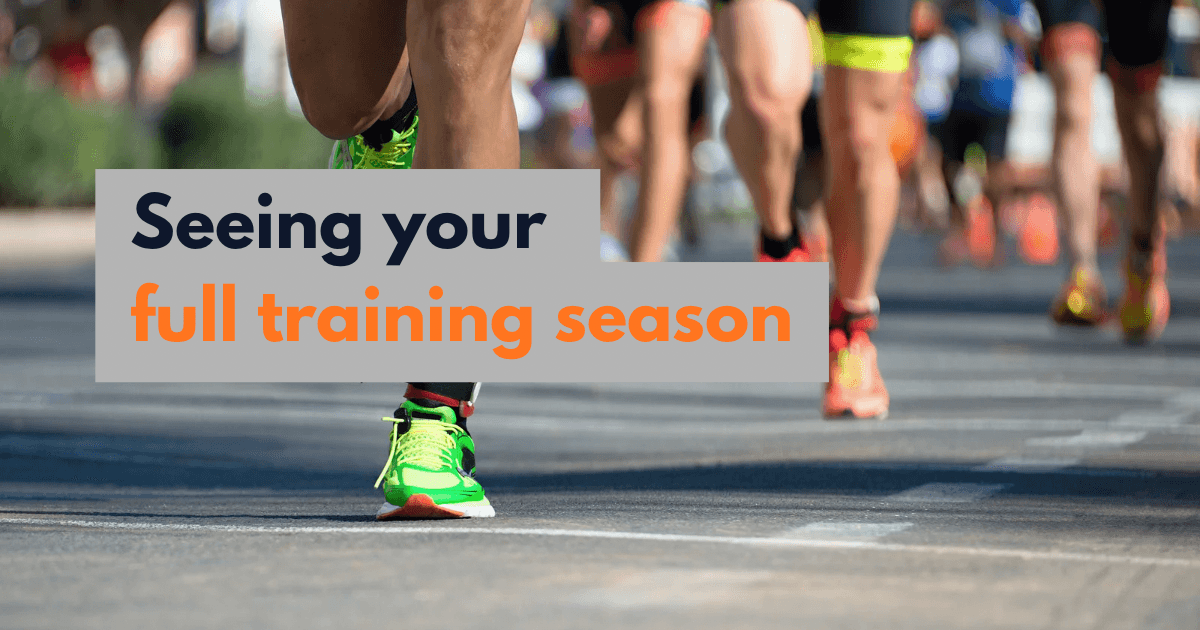Looking into the Future
Understanding how your daily and weekly training connects to the big picture is crucial for trust and motivation
A good week of proper marathon training is behind me. Working ourt felt great and progress towards my goal was solid. Or was it?
I did everything my AI coach prescribed. It was challenging, but not overwhelming. I was recovering well, but still feeling the effects of working out.
But I got an uneasy feeling. I had no real proof that I was “on track” with my training.
Third week of workouts
My week consisted of 2 easy runs (4km or so) and one long run (7,5km or so). Two 30 min strength sessions to guard against injuries, and daily mobility to keep everything supple. 2 rest days to let the body recover properly.
This all feels good, but I’m flying blind. My coach just prescribes week-by-week workouts and I have to trust it leads to my goal.
Covering enough distance during training
One of the major challenges with training for your first marathon is not knowing if you’re gonna be ready on race day.
There’s really only one way to be sure, or as sure as one can be. Cover enough distance during your training, both in your prograsively longer long runs and in your weekly total running.
My AI coach knows that, but I don’t know for sure if it plans for it.
The big redesign
So I got back on the drawing board. I needed to ensure my coach has a solid plan for the whole training season, and I needed to see that.
Marathon training is often broken up into phases. A simple but common phase breakdown is: base, build, peak, taper.
Each phase has its own role in preparing the athlete for the race day. They target creating specific adaptations in the body (and the mind).
Base phase
In this phase, we build the aerobic engine with steady, conversational pace runs while gradually extending the distance covered.
Our bodies build mitchondria and capillaries in the muscles that propel us when running, improving their ability to get and use oxygen.
This phase is key to success in the journey towards a marathon.
Build phase
One of the biggest challenges beginners face with their marathon is the sheer amount of time they have to spend running. The faster you’re able to run, the less time you have to spend running.
It’s a totally different thing to run for 3 hours than it is to run for 5 hours.
The build phase is where we start building speed to our runs. We introduce tempo runs, intervals, and other types of running workouts beyond the easy running of base phase.
We also extend our long runs to condition our bodies to handle the full 42km of a marathon.
Our bodies adapt to the speed work by improving its lactate threshold. Running at faster speeds is also crucial for developing better running economy by improving form. It’s easier to run eith good form when you’re running a bit faster.
Peak phase
Specificity matters, and the peak phase is where we target the specific requirements of our marathon challenge.
We practice running at our target pace, getting our bodies accustomed to that speed. We run our longest long runs, proving to ourselves we can handle the distance.
Peak phase is the toughest phase of marathon training, and all the training before has prepared us to handle it.
Taper phase
Last but not least comes to the taper phase. It might seem like the least important as we cut down on the amount of running we do, but it’s role is crucial. Here’s when we focus on keeping our stride relaxed and our legs sharp.
This is when our bodies truly get stronger. Recovery is when the building happens. All the heavy training before it was just a catalyst.
Taper is also the big mental phase of training. Race day is getting close, and all we can do is trust the work we’ve done is enough to carry us the distance.
The full training season
A well designed training season links those phases, “mesocycles” in to a coherent whole. Furthermore, those mesosycles are broken down to microcycles, i.e. weeks.
When something happens in one, the rest can adapt within their own framework. Training is not just a succession of weeks, it’s an intentional system that shapes your body to the challenges of running a full marathon.
Back to week 1
So here we are. After a great third week of workouts and late nights on rebuilding my coach, it’s time to start over.
This time, I don’t just have an AI coach helping me. I have multiple, each with their own specialization on a part of the macro-, meso- and microcycles of marathon training.
Most importantly, I have a bird’s eye view on my whole training season, from week 1 to race day.
Here’s a sneak peek to the new system, my prototype UI for the iOS app. It shows my week’s workouts.


Nico
Founder of 1st Marathon · First-time marathoner
